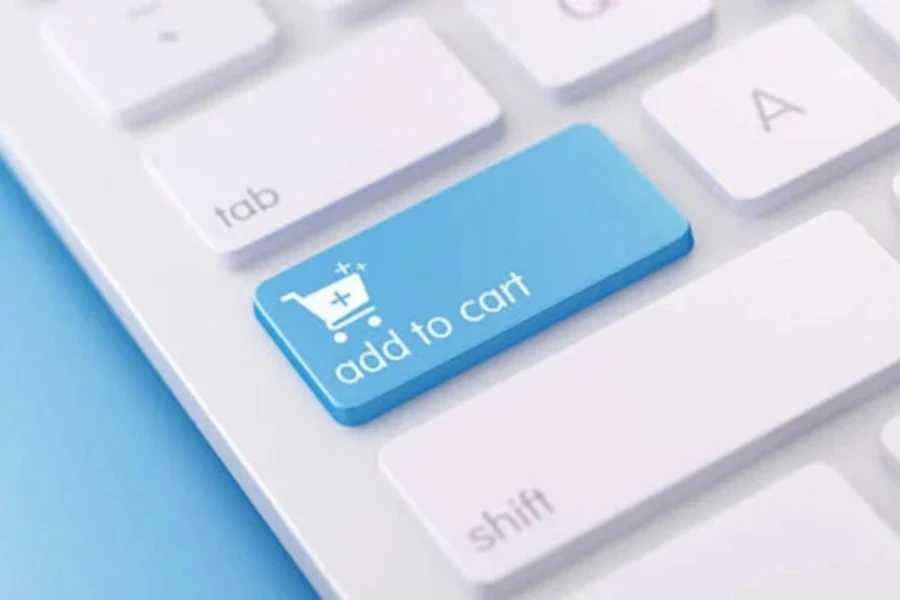Shopify A/B testing is a means to boost ecommerce sales by creating two website variants and running them against each other. The test aims to determine which variant performs better, and using data from the findings, businesses can make decisions to finesse their sales techniques.
If you’re new to Shopify A/B testing, you may have many questions, like how best to set up practical A/B tests? What elements should you test? How do you ensure a successful split test?
This article will provide all the relevant answers to these questions. It also discusses how to analyze your results and execute suitable changes as determined by the findings. Keep reading to learn more.
Table of Contents
Overview of Shopify A/B testing
Setting up A/B testing on Shopify
Best practices for Shopify A/B testing
Analyzing results and implementing changes
Conclusion
Overview of Shopify A/B testing
There are over 4.4 million Shopify websites spread throughout 175 countries globally. Although Shopify is a popular ecommerce website, only 5-10% of Shopify stores are successful, defined as those that have an average sales conversion rate of 2-3%.
Contributing factors to the building of fruitful Shopify stores, such as Fashion Nova, Kylie Cosmetics, and Unconditional, include using high-quality product images, competitive pricing, a user-friendly interface, and compelling website copy. With these tips and tricks, ecommerce sites can implement Shopify A/B testing and make the necessary adjustments to convert more visitors to buyers.
Setting up A/B testing on Shopify
When figuring out what to split-test in your Shopify store, it is crucial to define what exactly you want to test. The test’s purpose will influence which factors of variables you will test and how to run the experiment. Below are the steps you’ll want to follow to set up a successful A/B test on Shopify:
Defining your test
Defining your test is the first step any CRO agency will take before conducting A/B tests for their clients. It entails developing a hypothesis that produces results that influence a decision.
If increasing sales is your main goal, the basis of the test should aim to turn more visitors into clients. Other reasons for A/B testing are to improve user engagement and reduce bounce rates. Therefore, to boost online sales from your Shopify store, your A/B test should be based on these goals.
Setting up your test

You’ll then have to come up with some Shopify split test ideas. There are various website elements you can test against each other, including:
- The landing page
- Product prices
- Images
- Headlines
- Add-to-cart color buttons
- Email copy
- Offers
Creating A/B test elements will depend on statistics you can accrue relating to these specific variables. However, it can be daunting when trying to identify what to test. Also, you may have customers visiting your store but they leave too soon to establish significant data regarding their behavior.
Shopify provides its users with quantitative data about their customers, including quantitative data, the best kind when analyzing user behavior.
In addition, use of third-party customer tracking software like Hotjar can be a good idea. Hotjar utilizes heat maps to show how customers interact with your Shopify store. Using statistics from these heat maps, you can then conveniently generate split tests to improve conversions.
Setting up your test variants

In this step, you will create duplicate elements on your Shopify page. You need to start with ideas that have a high-performance outcome. Some test variants include:
- A high product price on one of your products
- Color A versus color B on the call to action
- Lifestyle images versus studio images for featured product images
- Simple page layout versus complex layout
- Offers like BOGO deals, such as buy one, get one half price versus buy one, get two free
Running the test
Running the test is relatively straightforward, with two main ways to do it; manual or automatic.
Manual testing suits Shopify websites with low traffic, while automatic is favorable for high-traffic Shopify platforms.
When using the manual way, you duplicate the live theme while naming them A and B. In the theme variant B, edit the elements you want to test against each other
After editing the themes, swap them hourly or daily to test their performance and see which provides the best results.
While switching them, remember to keep the time intervals equal. This way, you will get the most accurate results, better informing your decisions.
Lastly, record the hourly or daily results in a spreadsheet to monitor the performance of the themes.
Meanwhile, when using automated A/B testing, the process shares some similarities with the manual way. Automatic testing involves changing the themes with the help of an app.
There are plenty of Shopify A/B testing apps/tools you can use, and some of them include Google Optimize, Optimizely, and Convert. While some of these tools are free, others require a subscription.
For example, Google Optimize is a free Shopify A/B testing tool, making it a greater way for small businesses to start testing.
But, if your business has a bigger budget, Optimizely is the most comprehensive tool, costing at least $36,000 annually. Meanwhile, mid-range businesses can use Convert, with pricing starting as low as $99 per month.
While using your tool of choice, start by making a replica of the live variable you are testing, and name them A and B.
Make the changes you want in the B theme. For instance, when testing for the price of a product, adjust the price in the B theme, and an A/B test will be generated.
The app will automatically swap the themes every day at 12:01 am during the period at which you are running the test.
As the app changes the variants daily, it will also keep a record of the statistics; thus, no need to note down the stats in a spreadsheet. You can then refer to the data recorded in the Shopify A/B testing tool to guide you on whether to adopt the new or old theme.
Best practices for Shopify A/B testing
Some tips and tricks can help improve the chances of successful Shopify A/B testing. They include the following:
Test one element at a time
Conducting one split test at a time is vital as it gives you more accurate results in contrast to testing many elements.
For example, if you test more than one element and witness a change in the sales conversion, determining which element helped boost sales is nigh impossible. For example, if you test five elements, two may have helped to increase the conversion rate, while the other three may have lowered the sales conversion rate.
Moreover, you may want to maintain a variable with higher conversion while leaving a low converting one. Changing one variable at a time is crucial as it may help boost conversion rates in future split tests.
Testing for statistical significance
As there are many Shopify features you can split-test, use data from the Shopify website to determine which you want to test and change.
Shopify has tools to help you identify which sections or features customers are neglecting on your website. For instance, using their analytics, it is easy to determine whether BOGO deals perform better than headline banners.
You’ll then want to change the variable with the greatest impact after the test.
Testing both small and big changes
A/B testing works best when you take big chances. Yet, this doesn’t mean you should ignore making smaller changes on your website. Remember that your experiments will hopefully lead to increased sales.
For instance, while testing if higher product prices bring more sales, it’s also prudent to test minor impact elements, such as the position of the add-to-cart button. These small changes may help to boost sales even further.
Test continuously
Shopify A/B testing should be an ongoing process. After achieving your test’s goal, you can pick another element to test.
For example, once you have tested the landing page, you can split-test the product images.
Conducting more tests and making the necessary changes will hopefully improve your ecommerce website further.
Analyzing results and implementing changes
How to measure results
Measuring your results is the first step before making any website tweaks. After performing the split tests, you must then collect the data. Data proves that there was evidence of user behavior change when they used your Shopify website. You can use various methods to collect and record data:
- Recording on spreadsheets
- Shopify’s inbuilt analytic tools
- Google Analytics to track results
With manual recording, a spreadsheet can help you track the results. For example, when testing theme features, set the alarm to swap the variants daily, such as at 8am or midnight. Record the results each time. Note Shopify’s analytics while transferring them to the spreadsheet.
Google and Shopify analytics simplify data collection by automating everything during tests. Their calculators provide accurate conversion rates to help with better decision-making.
Interpreting results
The next step is interpreting the results, which will influence the changes you make. Using the data collected from Shopify’s analytics tools or Google Analytics, you can better understand which test variants performed better. For example, when testing two themes, use the results to make your judgment as to which performed better. Then pick the theme that positively influenced the store’s ecommerce sales.
Making changes based on the results

After identifying the best-performing variant, you must make the necessary adjustments, which as selecting the variant that brought more revenue to the store.
To make a change, edit the website on the server or client-side when the page loads. Customize at the customer’s end when making minimal changes or at the server side for more significant changes.
Conclusion
Shopify A/B testing is essential for B2C companies, dropshippers, and retailers to help boost their sales. Tools such as Hotjar, Google Analytics, Shopify Analytics, and Google Optimize make it easy to develop split test ideas, run tests, analyze results, and make the necessary changes.
Businesses should make changes based on the significance of their findings. In addition, A/B testing should be a constant, systematic process used by sellers to continue to improve and finesse their ecommerce platforms.



